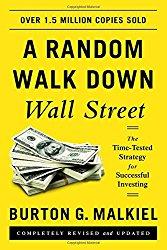So you’re ready to make your first stock purchase. You have the company you’re interested in purchasing picked out, and you’re about ready to pull the trigger. But then you take a look at the price chart for the last few months and see that it has moved up and down quite a bit during that time. You’re worried that you may end up paying to much. But, then again, what if you wait and the price shoots way up, leavign you behind. You wonder:
How do I know what price I should pay for a stock?
There are two different answers to your question, depending on whether you are trying to determine 1) if you are overpaying or underpaying for a stock now, or 2) how to determine which stocks are under-priced relative to others and to where they may be in the next few years.
How do you know if you’re overpaying or underpaying?
On the first question, because of the Efficient Market Theory, you do not need to worry that you are being “ripped off” when buying a stock. The Efficient Market Theory basically says that because there are so many people trading the various stocks prices will very quickly move to reflect the current state of the companies and other factors. If a stock comes out with great earnings news, the price will move up immediately. Likewise, if there are rumors of a scandal, the price will drop. There are also people called arbitrageurs who have traders monitoring the different world markets. If they discover that shares of Microsoft are trading at different values in different parts of the world they will take advantage of this difference by buying shares where they are cheaper and simultaneously selling them in the place where they are more expensive. Price differentials, therefore, do not last long. Because of this, you can almost always feel comfortable paying market price for a stock that you like.
Note that this does not mean that a stock will not go up or down in price a bit after you’ve bought it. Stocks tend to move in short-term, mid-term, and long-term trends. The short-term fluctuations will cause a stock to move up or down in price by a few percentage points each day. These are due to traders trying to make money by buying during small upward fluctuations and then selling before the upward fluctuation ends. Note that most of these people lose money because they need to find someone willing to pay more than they paid before the stock drops in price, and do this consistently to make money because the fluctuations are small. In general, though the price will fluctuate in a range until some news comes out that pushes it one direction or another. At that point, the efficient market reprices it for the news and future prospects.
A great book on efficient market theory is the classic, A Random Walk down Wall Street: The Time-tested Strategy for Successful Investing

How do I determine if a stock is under-priced, and therefore a good buy for the future?
The second question, how to determine if a stock is underpriced relative to where it should be in the future is an aspect of value investing. People have discovered that despite the efficient market theory, some stocks do go down in price and become inexpensive, or move up in price and become overpriced during medium-trend fluctuations due to various factors. Some great stocks fall out of favor as money managers chase other “hot” stocks. Likewise, some hot stocks rise well above any reasonable price level. When either of these scenarios happens, the mismatch in price tends to last longer than one would expect.
The long-term trend, however, will always follow the fundamentals of the stock. If you hold an underpriced stock long enough, therefore, eventually the stock will rise in price to an equilibrium based on the earnings level (unless you’ve misjudged something, in which case the earnings may fall until an equilibrium based on the price is reached). Likewise, if you find a stock with increasing earnings, the price will tend to rise over time at the rate of the earnings increase. If earnings are increasing by 10% per year, over a long period of time (5-10 years), the stock price should also increase by about 10% per year. Of course, this will be years that are 30% up followed by some that are 20% down, not a steady 10% rise like a bank account.
A good way to judge the price of a stock is using the Price Earnings, or PE ratio. This is just simply the price divided by the earnings, either current or expected future earnings. Stocks tend to trade within a range of PE ratio. If a stock tends to have a PE between 15 and 20, then it is relatively inexpensive when trading below 15 or expensive when trading about 20.
One must be careful, however, when applying this technique. A stock that is growing rapidly may command a very high PE compared to that of its peers. If a stock has earnings that are growing by 30% per year while its peers are only growing by 10% per year, for example, it may have a PE of 25-30 when its peers have PEs of 15-20. When the stock reaches maturity and cannot continue to increase earnings so quickly the PE will settle into the range of its peers. One should, therefore, look for decelerating earnings if a stock that has traditionally traded at a high premium is suddenly faltering.

Want all the details on using Investing to grow financially Independent? Try The SmallIvy Book of Investing.
Note, this blog post includes affiliate links, where The Small Investor receives a small commission when you click on a link and make a purchase. This costs the buyer nothing extra and helps The Small Investor remain a free resource.
Have a burning investing question you’d like answered? Please send to [email protected] or leave in a comment.
Follow on Twitter to get news about new articles. @SmallIvy_SI
Disclaimer: This blog is not meant to give financial planning or tax advice. It gives general information on investment strategy, picking stocks, and generally managing money to build wealth. It is not a solicitation to buy or sell stocks or any security. Financial planning advice should be sought from a certified financial planner, which the author is not. Tax advice should be sought from a CPA. All investments involve risk and the reader as urged to consider risks carefully and seek the advice of experts if needed before investing.
